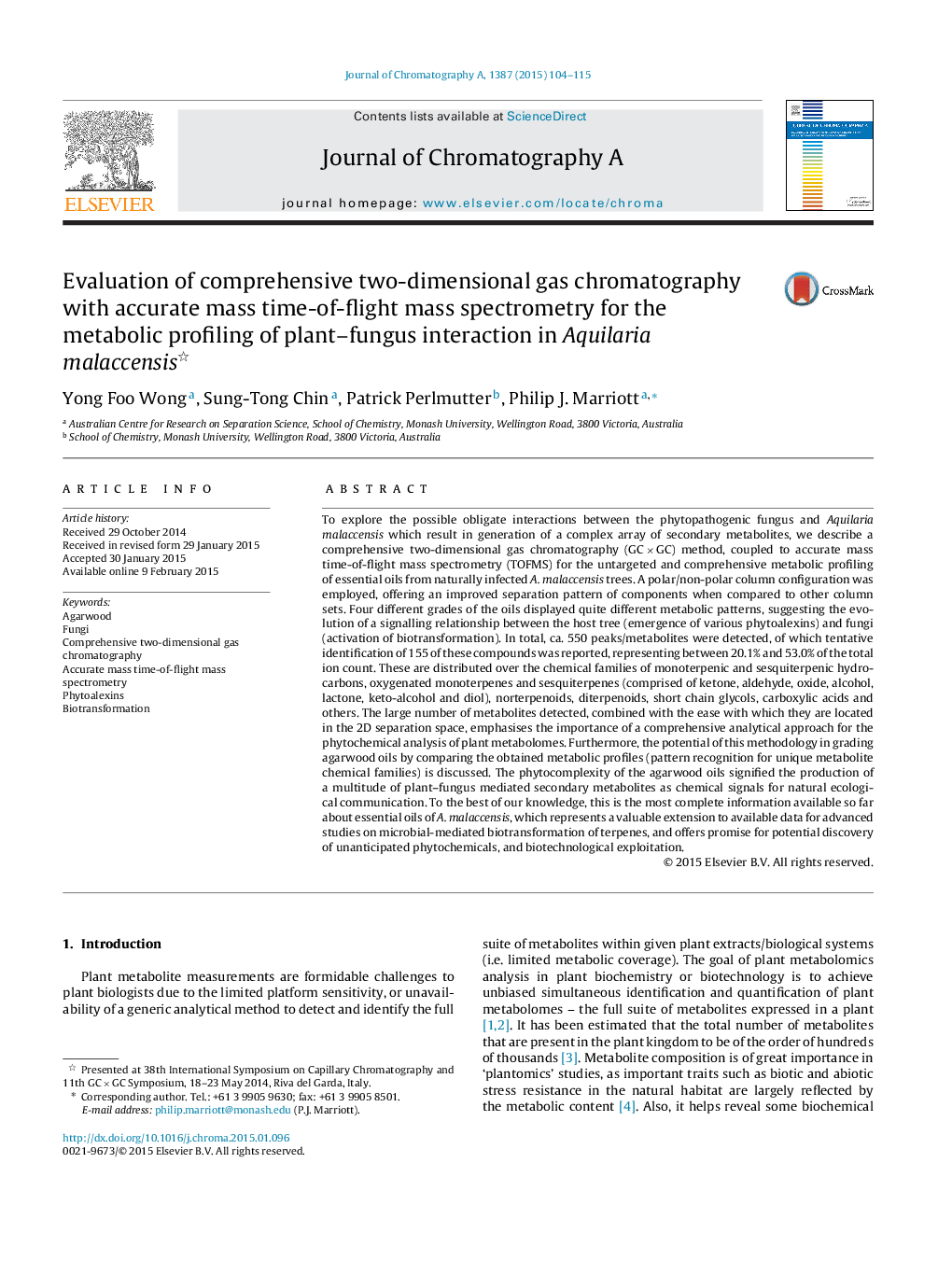| Article ID | Journal | Published Year | Pages | File Type |
|---|---|---|---|---|
| 1199369 | Journal of Chromatography A | 2015 | 12 Pages |
•High resolution metabolic profiling of agarwood extracts using GC × GC–QTOFMS.•Hundreds of plant–fungus mediated secondary metabolites were detected.•Structured GC × GC data simplify compound clustering and identification.•Agarwood extracts comprised mainly of sesquiterpenic and diterpenic compounds.•The GC × GC–TOFMS profiles gave a global view of Aquilaria malaccensis chemotaxonomy.
To explore the possible obligate interactions between the phytopathogenic fungus and Aquilaria malaccensis which result in generation of a complex array of secondary metabolites, we describe a comprehensive two-dimensional gas chromatography (GC × GC) method, coupled to accurate mass time-of-flight mass spectrometry (TOFMS) for the untargeted and comprehensive metabolic profiling of essential oils from naturally infected A. malaccensis trees. A polar/non-polar column configuration was employed, offering an improved separation pattern of components when compared to other column sets. Four different grades of the oils displayed quite different metabolic patterns, suggesting the evolution of a signalling relationship between the host tree (emergence of various phytoalexins) and fungi (activation of biotransformation). In total, ca. 550 peaks/metabolites were detected, of which tentative identification of 155 of these compounds was reported, representing between 20.1% and 53.0% of the total ion count. These are distributed over the chemical families of monoterpenic and sesquiterpenic hydrocarbons, oxygenated monoterpenes and sesquiterpenes (comprised of ketone, aldehyde, oxide, alcohol, lactone, keto-alcohol and diol), norterpenoids, diterpenoids, short chain glycols, carboxylic acids and others. The large number of metabolites detected, combined with the ease with which they are located in the 2D separation space, emphasises the importance of a comprehensive analytical approach for the phytochemical analysis of plant metabolomes. Furthermore, the potential of this methodology in grading agarwood oils by comparing the obtained metabolic profiles (pattern recognition for unique metabolite chemical families) is discussed. The phytocomplexity of the agarwood oils signified the production of a multitude of plant–fungus mediated secondary metabolites as chemical signals for natural ecological communication. To the best of our knowledge, this is the most complete information available so far about essential oils of A. malaccensis, which represents a valuable extension to available data for advanced studies on microbial-mediated biotransformation of terpenes, and offers promise for potential discovery of unanticipated phytochemicals, and biotechnological exploitation.
